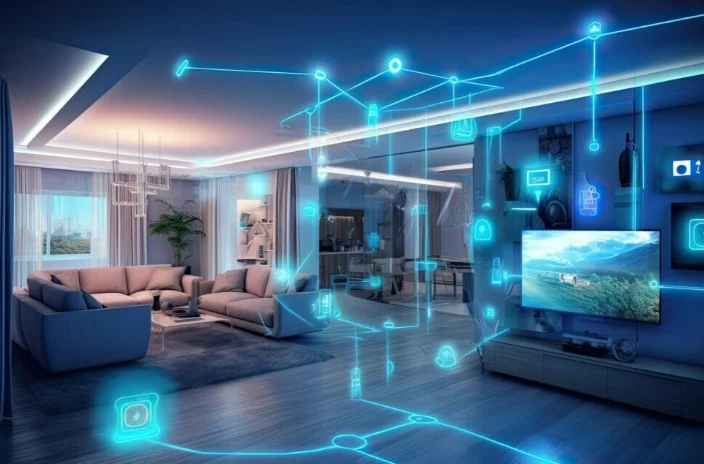Smart home technology has revolutionized how we manage and protect our homes. One of the most valuable features of modern security systems is the ability to customize alerts to fit your specific needs. With smart home apps, homeowners can tailor notifications based on a wide range of triggers—from smoke and carbon monoxide detection to motion, sound, temperature, and humidity sensors.
The importance of customization in home security
Customization ensures you’re informed about potential dangers without being overwhelmed by unnecessary notifications, giving you peace of mind that your home is under constant, personalized surveillance.
Every home is different, and neither are the security needs of their residents. A family with young children may have safety concerns other than those of someone living alone. Similarly, those in colder climates might worry more about freezing pipes, while residents in warmer areas may focus more on fire risks.
Customization allows homeowners to address these specific concerns. Instead of receiving a flood of alerts that might cause more anxiety than reassurance, you can configure your system to notify you only when necessary. This level of control means you’re always in the loop regarding real threats, reducing unnecessary distractions while ensuring your home remains secure.
How to customize smart home alerts
Customizing alerts through a smart home app is simple, yet it provides significant control over your security system with:
- Smoke and carbon monoxide detectors- A HomeKit smoke detector is crucial for ensuring the safety of your home. Through your smart app, you can customize how and when you receive alerts. For example, you may want immediate alerts on your phone when you’re away while opting for quieter notifications when you’re at home. You can also set alerts for low battery warnings or device malfunctions to ensure your system remains fully functional.
- Motion and sound detectors – Customizing motion sensors and sound detectors allows you to decide how sensitive you want the system to be. You can be notified only when certain areas of your home detect motion, such as entrances or sensitive zones like nurseries or home offices. Sound detectors, such as glass break sensors, can also be customized to alert you for specific sound types, reducing false alarms caused by normal household noises.
- Temperature and humidity sensors – These sensors are essential for preventing damage to your home. You can set thresholds for temperature and humidity, which will alert you if conditions move beyond your specified range. For instance, if the temperature in your home drops too low, you could receive a notification warning of potential frozen pipes. Similarly, humidity sensors can alert you to conditions that may lead to mold growth, allowing you to address issues before they cause significant damage.
By customizing the notifications from these sensors, homeowners can create a security system that addresses external threats and ensures the home environment is consistently monitored.
Combining multiple sensors for enhanced security
A robust home security system combines multiple sensors to create an all-encompassing protective net. Smart home apps make it easy to sync different types of detectors and manage their alerts seamlessly with Group Alerts and Custom Schedules.
With countless smart home products available today, homeowners have more options than ever when choosing a system that fits their needs. Whether you prefer wireless systems that allow for flexibility in sensor placement or hard-wired solutions for more permanent installations, the key is to find an Owl Wired system that offers integrated services.

Shannon Reyes is a seasoned writer with a knack for crafting engaging blogs on a variety of service industries, including plumbing, cleansing, moving, pest control, and roofing. With a keen eye for detail and a passion for helping readers navigate complex topics, Shannon brings her expertise to life through informative and accessible content.











